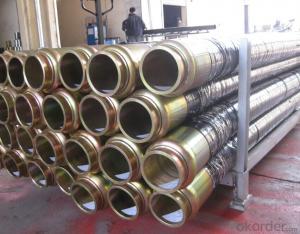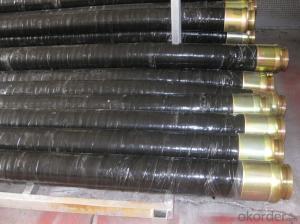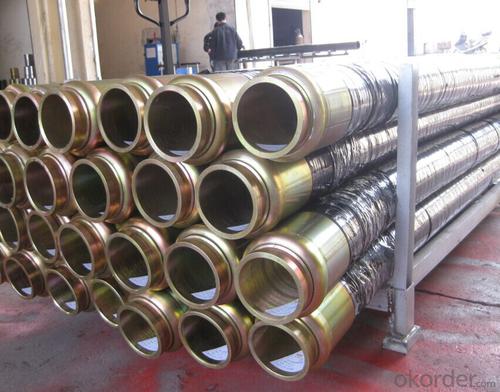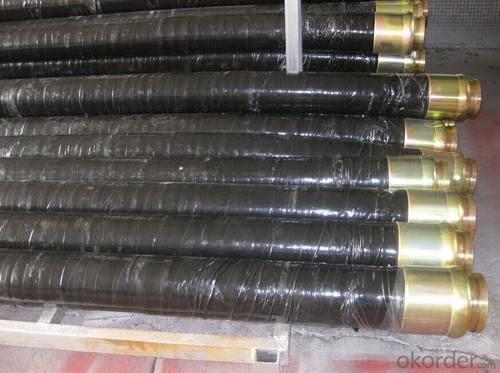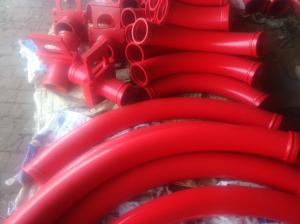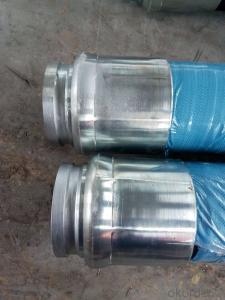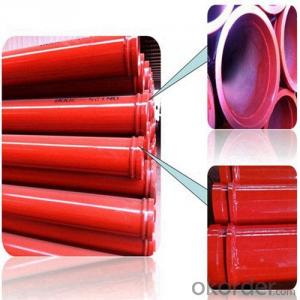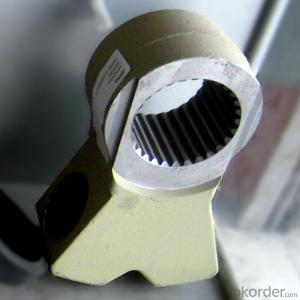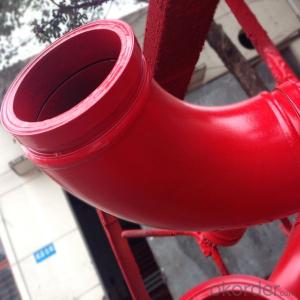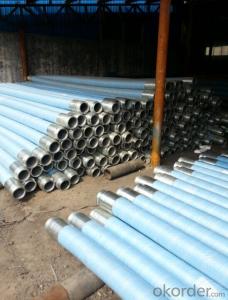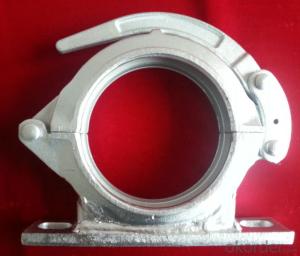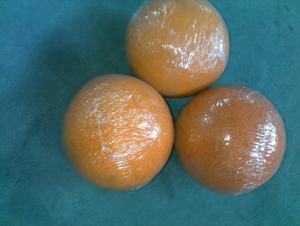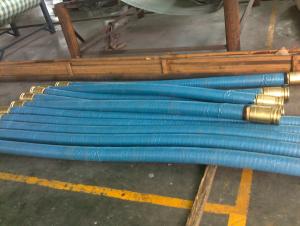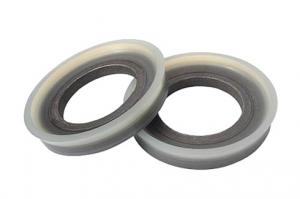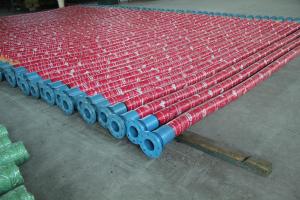4M*DN125(5.5'') RUBBER END HOSE WITH ONE SIDE COUPLINGS WORKING PRESSURE 85 BAR
- Loading Port:
- Shanghai
- Payment Terms:
- TT OR LC
- Min Order Qty:
- 10 pc
- Supply Capability:
- 5000 pc/month
OKorder Service Pledge
OKorder Financial Service
You Might Also Like
Specifications
Putzmeister concrete pump end rubber hose
1. Size: DN150, DN125, DN100, DN80...
2. Length: 1~9m
Concrete pump end rubber hose PM &Schwing
Name | Specifications | Application | Flange diameter | Remarks |
Rubber hose | DN125*3000 | Concrete pump | 148/DN157mm | |
Rubber hose | DN150*3000 | Concrete pump | 148/DN157mm | |
High pressure | DN125*3000 | Concrete pump | 148/DN157mm | Two layers of steel wire |
High pressure | DN125*3000 | Concrete pump | 148/DN157mm | Four layers of steel wire |
High pressure | DN125*4000 | Concrete pump | 148/DN157mm | |
High pressure | DN150*3000 | Concrete pump | 175mm | |
| DN80*5000 | Mortar pump mini conctete pump | 98mm | |
| DN80*6000 | Mortar pump mini conctete pump | 98mm | |
| DN100*5000 | Mortar pump mini conctete pump | 124mm | |
| DN76*6000 | Fine stone concrete pump mini conctete pump |
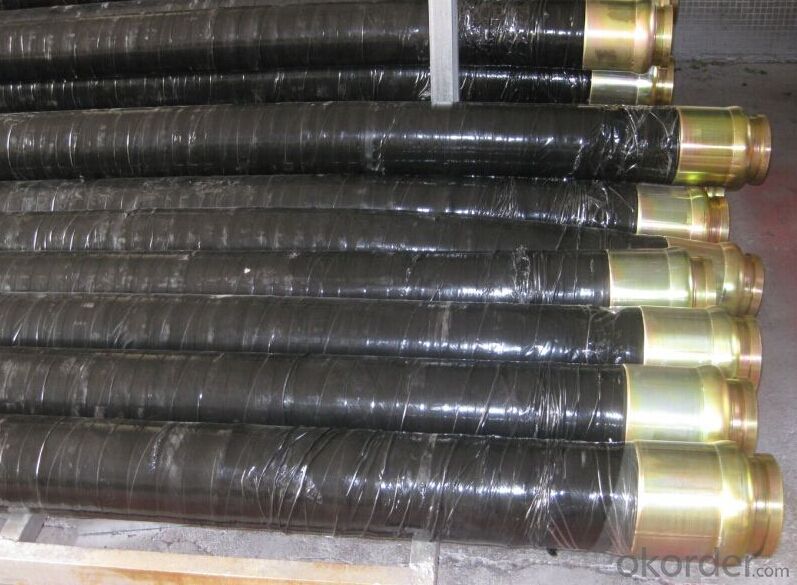
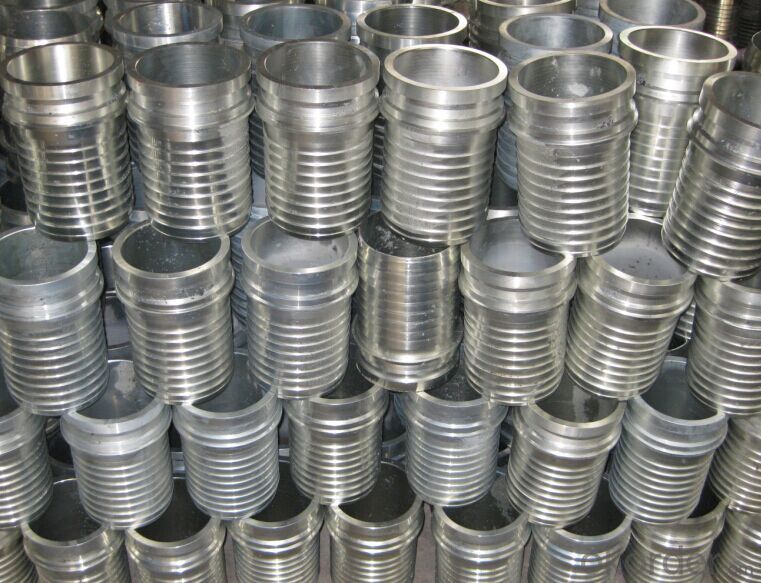
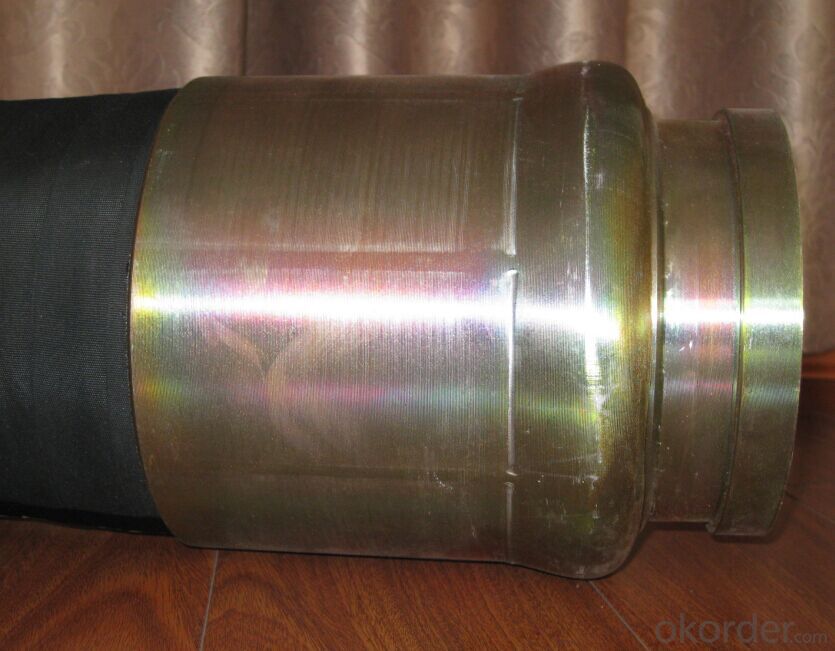
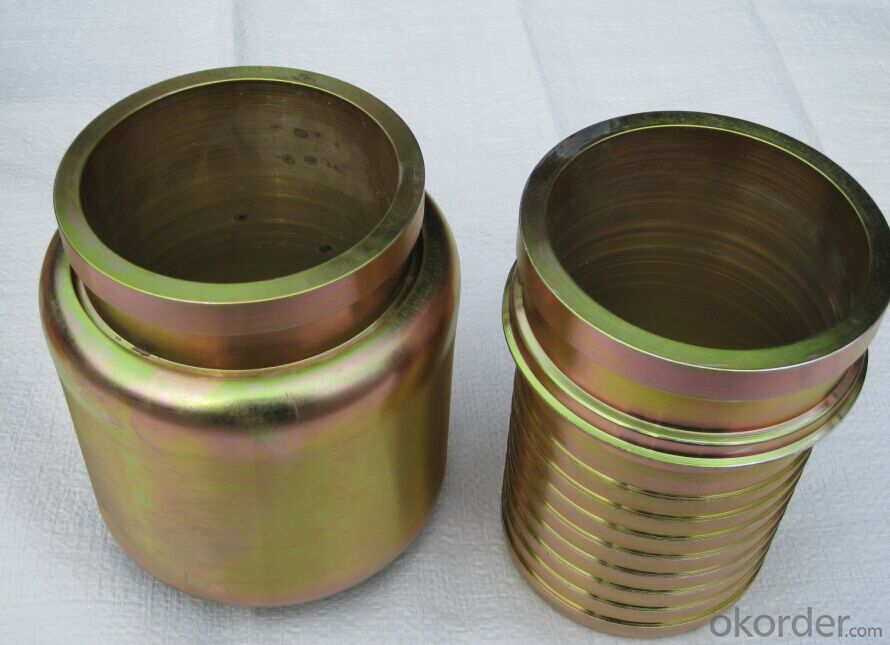
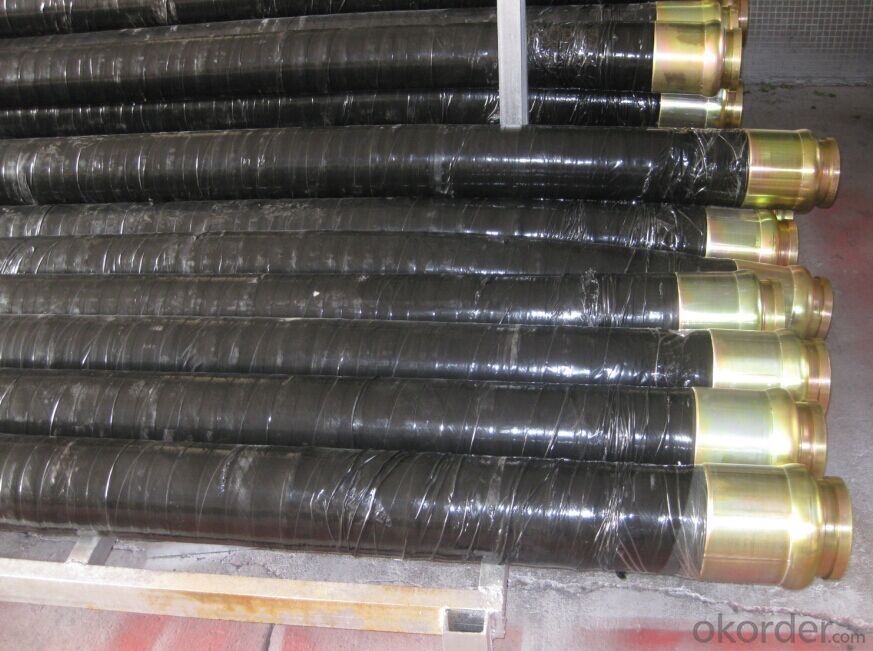
- Q: What are the signs of a damaged concrete pump S valve?
- Indications of a damaged S valve in a concrete pump include leakage, reduced pumping efficiency, increased pressure, unusual noises, difficulty in switching directions, and inconsistent concrete flow. If any of these signs are observed, it is crucial to promptly address the issue to prevent further damage and ensure the safe and efficient operation of the pump. Seeking professional assistance or referring to the manufacturer's guidelines is advised for accurate diagnosis and repair of the S valve.
- Q: How often should I replace concrete pump spare parts?
- The frequency at which you should replace concrete pump spare parts depends on various factors such as the quality of the parts, the intensity of usage, and regular maintenance. Generally, it is recommended to conduct regular inspections and maintenance to identify any signs of wear or damage in the spare parts. As a preventive measure, it is advisable to replace parts that show significant wear or are no longer functioning optimally. However, it is crucial to follow the manufacturer's guidelines and recommendations for the specific concrete pump model you are using. Additionally, consulting with experienced professionals or technicians in the field can provide valuable insights on the expected lifespan of different spare parts and when replacements may be necessary.
- Q: How does a concrete pump S valve function?
- A concrete pump S valve functions by controlling the flow of concrete from the hopper to the discharge outlet. The S valve is a crucial component in the concrete pumping system as it allows for the precise and efficient delivery of concrete to the desired location. The S valve consists of two separate valves, one on each side, that are connected by a central shaft. These valves are shaped like an "S", hence the name. Each valve has a concrete outlet and a hydraulic cylinder that controls its movement. When the concrete pump is activated, the hydraulic system applies pressure to the cylinders, causing them to push the valves open. As the valves open, concrete is allowed to flow from the hopper into the pump's cylinder. Once the concrete is inside the cylinder, the hydraulic system reverses the pressure on the cylinders, causing them to retract. This movement pulls the valves closed, sealing off the cylinder and preventing any backflow of concrete. As the cylinder retracts, it also pushes the concrete inside towards the discharge outlet. The pressure created by the retraction of the cylinder forces the concrete through the outlet pipe, which leads to the desired location for pouring. The S valve's design allows for a smooth and continuous flow of concrete, without any interruption or blockages. It also provides a high level of control over the concrete placement, allowing operators to adjust the flow rate and direction as needed. Overall, the concrete pump S valve is responsible for regulating the flow of concrete, ensuring its efficient and precise delivery to the desired location. Its reliable and effective functioning is vital for successful concrete pumping operations.
- Q: How often should hopper agitator shafts be inspected or replaced in a concrete pump?
- Hopper agitator shafts in a concrete pump should be regularly inspected and maintained to ensure optimal performance and prevent potential breakdowns. The frequency of inspection or replacement depends on several factors such as the usage and operating conditions of the pump. As a general guideline, it is recommended to inspect the hopper agitator shafts at least once every three to six months. During the inspection, the shafts should be checked for any signs of wear, damage, or misalignment. If any issues are detected, appropriate measures should be taken, such as lubrication, realignment, or replacement of damaged parts. However, it is important to note that the frequency of inspection may vary depending on the intensity of use, the type of materials being pumped, and the overall condition of the pump. For instance, if the pump is subjected to heavy-duty or continuous operation, it may be necessary to inspect the agitator shafts more frequently, such as on a monthly basis. Regular maintenance and inspection of hopper agitator shafts not only ensure the smooth operation of the concrete pump but also extend the lifespan of the equipment. Timely detection and resolution of any issues can prevent costly repairs or downtime in the future. Additionally, following the manufacturer's recommendations and guidelines for maintenance can help optimize the performance and reliability of the concrete pump.
- Q: How long does a concrete pump piston typically last?
- A concrete pump piston typically lasts between 20,000 to 60,000 pumping hours, depending on factors such as maintenance, usage, and the quality of the pump.
- Q: Is the main pump of the concrete pump electric control or hydraulic control?
- The main pump behind the oil pump to provide the size of the oil with the greater the current the higher the higher the higher the displacement,
- Q: How do I troubleshoot issues related to concrete pump spare parts control systems?
- To troubleshoot issues related to concrete pump spare parts control systems, you can follow these steps: 1. Start by checking the power supply and connections to ensure there are no loose or damaged wires. 2. Verify that the control system is properly calibrated and programmed according to the manufacturer's instructions. 3. Inspect the control panel for any visible signs of damage, such as burnt components or water ingress. 4. Use a multimeter to test the voltage and continuity of different control system components, such as sensors, switches, and relays. 5. Consult the system's user manual or contact the manufacturer for any specific troubleshooting steps or error code interpretations. 6. If the issue persists, consider contacting a professional technician or the manufacturer's customer support for further assistance.
- Q: What is the purpose of a concrete pump cleaning ball?
- The purpose of a concrete pump cleaning ball is to effectively clean and remove any residual concrete or debris that may be left inside a concrete pump system. These cleaning balls are designed to be inserted into the pumping system and then pushed through the pipes using water pressure or compressed air. As they move through the system, the cleaning balls scrape off any hardened concrete or buildup, ensuring that the pump and pipes remain free from blockages and perform at their optimal level. This regular cleaning process helps to prevent clogs, maintain the efficiency of the pump, and prolong the lifespan of the equipment. Additionally, using cleaning balls also helps to ensure that the next batch of concrete being pumped is not contaminated by any leftover debris, resulting in a higher quality end product.
- Q: Are there any regulatory requirements for the quality and standards of concrete pump spare parts?
- Yes, there are regulatory requirements for the quality and standards of concrete pump spare parts. These requirements ensure that the spare parts meet certain quality and safety standards, and comply with industry regulations. These regulations help to safeguard the performance and integrity of concrete pumps, and ensure that the spare parts used in them are reliable and safe.
- Q: How often should agitator shaft seals be replaced in a concrete pump?
- The frequency at which agitator shaft seals should be replaced in a concrete pump depends on several factors such as the type and quality of the seal, the operational conditions of the pump, and the maintenance practices followed by the user. However, as a general guideline, it is recommended to inspect and replace agitator shaft seals in a concrete pump every 500 to 1,000 operating hours or annually, whichever comes first. Regular inspection of the seals is crucial to identify any signs of wear, leakage, or damage. If any of these issues are detected, immediate replacement is necessary to prevent further damage to the pump and ensure optimal performance. Additionally, it is essential to follow the manufacturer's recommendations and guidelines regarding seal replacements, as they may provide specific instructions based on the pump model and seal type. Proper maintenance practices, including regular cleaning and lubrication of the seals, can also extend their lifespan and reduce the need for frequent replacements. It is important to keep in mind that failure to replace worn or damaged agitator shaft seals in a timely manner can lead to increased downtime, decreased efficiency, and potential damage to other components of the concrete pump. Hence, it is crucial to prioritize regular inspection and replacement of agitator shaft seals to ensure the smooth operation and longevity of the concrete pump.
Send your message to us
4M*DN125(5.5'') RUBBER END HOSE WITH ONE SIDE COUPLINGS WORKING PRESSURE 85 BAR
- Loading Port:
- Shanghai
- Payment Terms:
- TT OR LC
- Min Order Qty:
- 10 pc
- Supply Capability:
- 5000 pc/month
OKorder Service Pledge
OKorder Financial Service
Similar products
Hot products
Hot Searches
Related keywords
